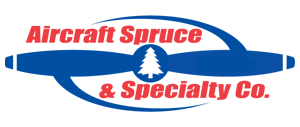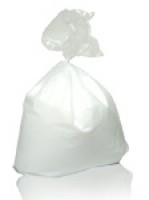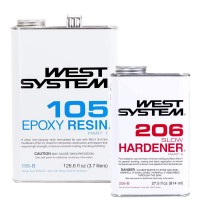3M™ Glass Bubbles
- JUMP TO
- Overview
- Documents
- Reviews
- Q&A
- View in Catalog
Overview
|
These K-20 series bubbles are actually hollow glass spheres. Because this high-quality glass is very crush resistant, the foam is much stronger, stiffer and water-resistant than any foam made by chemical foaming. These foams displace 4-6 times their weight in most resins and improve the handling characteristics of the base resin. They have a low bulk density and are nontoxic. Mix resin and hardener as directed, then fold in the glass bubbles. Upon cure, a strong, low-density product results which is easy to sand and file. May be shaped to form compound angles and curves. The term "micro" was applied to the mixture of microspheres and epoxy early in the development of composite structures. Although microspheres have been replaced by glass bubbles the word "micro" is still commonly used to reference the mixture. "Micro is used to fill voids and low areas, to glue foam blocks together and as a bond between foams and glass cloth. Micro is used in three consistencies - (1) a "slurry" which is a one-to-one by volume mix of epoxy and glass bubbles, (2) "wet micro" which is about two to four parts glass bubbles by volume to one part epoxy, and (3) "dry micro" which is a mix of epoxy with enough glass bubbles to obtain a paste which will not sag or run (about five parts to one by volume). In all instances, glass bubbles are added to completely mixed epoxy resin and hardener. Wet micro is used to join foam blocks and is much thicker than slurry (it has the consistency of honey) but can be brushed. Dry micro is used to fill low spots and voids and is mixed so that it is a dry paste and will not sag. Apply with a putty knife. Never use micro between glass layers. CAUTION - When mixing epoxy and glass bubbles, wear a dust mask and keep your face away from the balloons that may float up into the air. Although glass balloons are inert, they can lodge in your eyes or in your lungs and cause problems. Handle with care. |
WARNING: Cancer and Reproductive Harm - www.P65Warnings.ca.gov. |
Reviews
Work great like expected! Thanks for the quick delivery!
3M Glass Bubbles 1 Lb.
I have achieved good results with this product
3M Glass Bubbles 1 Lb.
3M Glass Bubbles 1 Lb.
3M Glass Bubbles 1 Lb.
As advertised
3M Glass Bubbles 5 Lb.
3M Glass Bubbles 1 Lb.
Great product
3M Glass Bubbles 1 Lb.
Used this product with polycrylic as a filler on my model airplanes. Fills great sands even better.
3M Glass Bubbles 1 Lb.
3M Glass Bubbles 1 Lb.
3M Glass Bubbles 1 Lb.
Q&A
Please note, Aircraft Spruce's personnel are not certified aircraft mechanics and can only provide general support and ideas, which should not be relied upon or implemented in lieu of consulting an A&P or other qualified technician. Aircraft Spruce assumes no responsibility or liability for any issue or problem which may arise from any repair, modification or other work done from this knowledge base. Any product eligibility information provided here is based on general application guides and we recommend always referring to your specific aircraft parts manual, the parts manufacturer or consulting with a qualified mechanic.
Please see the Tech Data Sheet located in the "Documents" tab of this web page. Reference product K20. It has all available technical information including particle size.
1 pound of material is in a gallon bag.
It is always good to wear breathing protection when sanding any material.
We do not have any data for this product for use as you decribe. This has been used as a filler for laminating epoxies to make a slurry for finishing the surface of composites parts. It is commonly used when mixed with an epoxy to a toothpaste like consistency. Once fully cured, you can use the primer and top coat paint of your choice.
We do not have any documents that compare the two products, but these glass bubbles are mixed with epoxies and made in to a paste and used as a finishing filler on parts. The limitations to size would be determined by the pot life of the epoxy being used. The longer the pot life, the more area can be covered per batch made.








 FREE Shipping
FREE Shipping






















